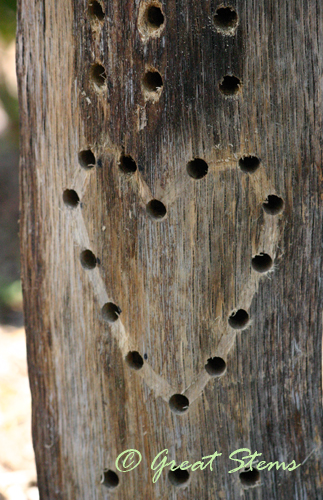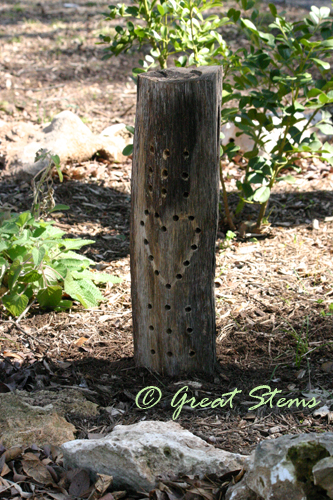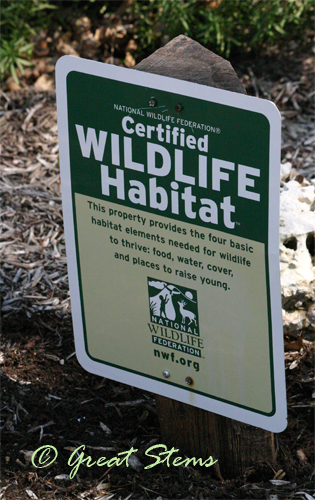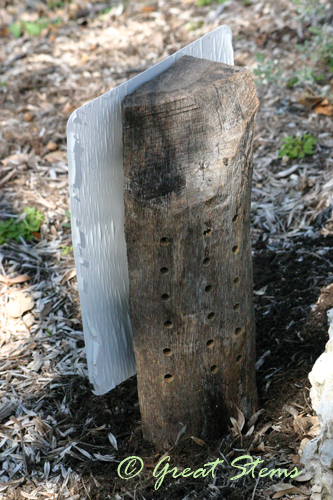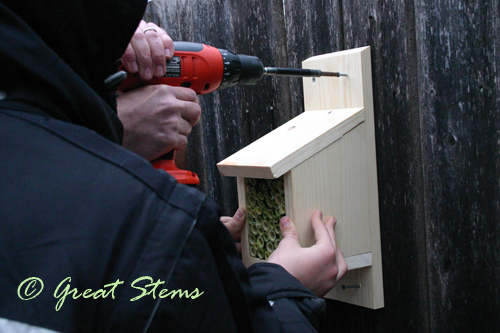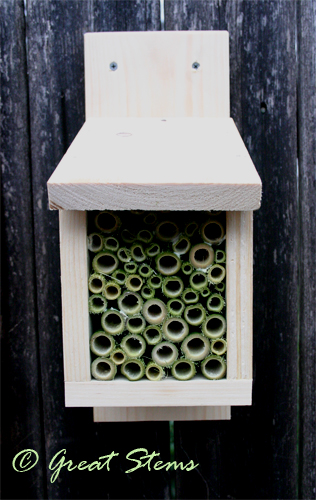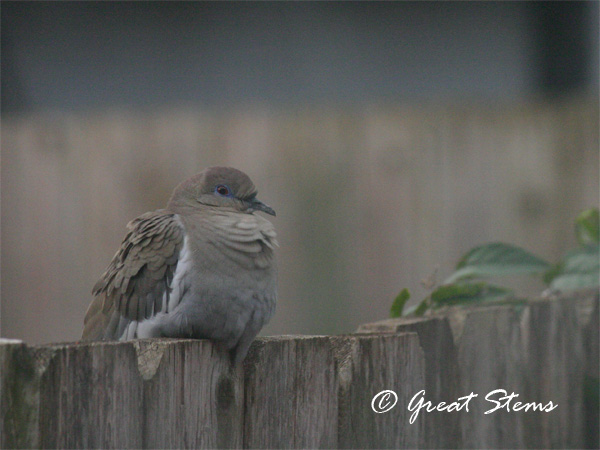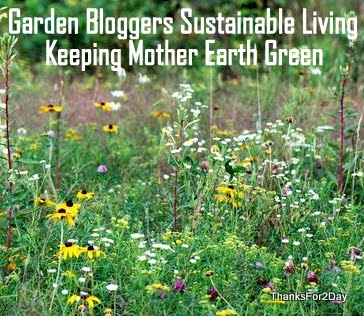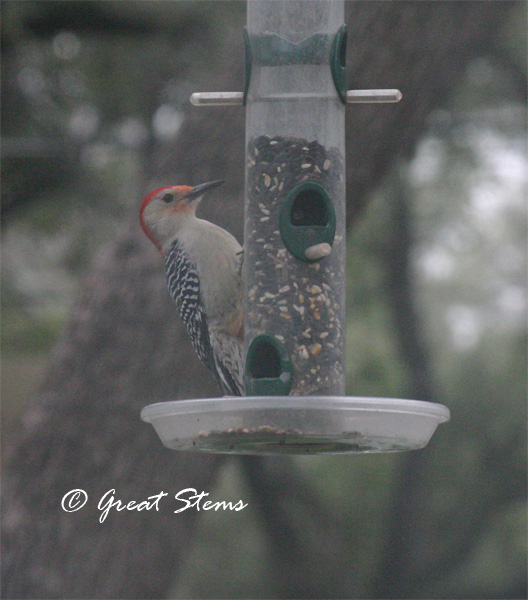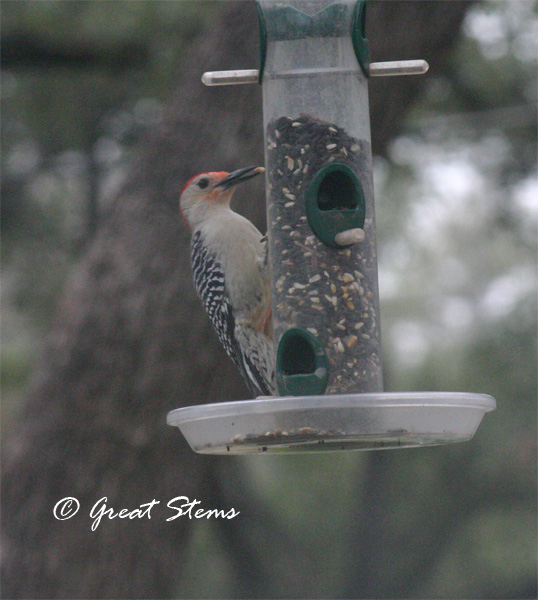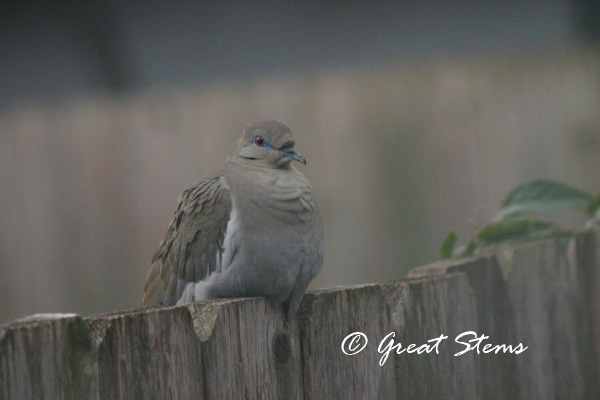My husband and I completed an Urban Forest Steward training program this past weekend here in Austin. Going into the first class three months ago, I have to say I really didn’t know what to expect. After all, I’d learned so much already about trees, so I thought. But without a doubt, I’m glad that I took the class with my husband, because we learned a tremendous amount. Most of the class was held indoors, but we occasionally ventured out for hands-on demonstrations on pruning, planting, etc.
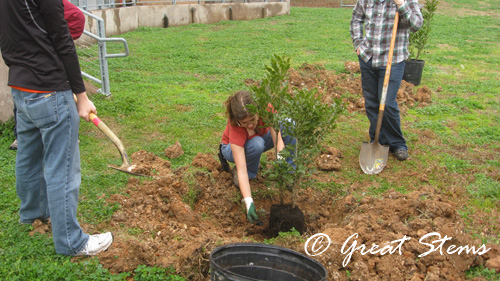 Here are several of the many facts and tips we learned:
Here are several of the many facts and tips we learned:
Planting
When planting trees from containers, you really need to look deeper into the soil (pulling the tree out of the container) and look for girdling roots around the stem/trunk and encircling roots around the root mass. There’s a method to cutting, but the main thing is that you want to cut girdling and encircling roots and redirect as many roots as you can to radiate out from the center, before you backfill with dirt. Don’t be afraid to move aside some dirt to seek out those roots wrapping around the stem and main roots.
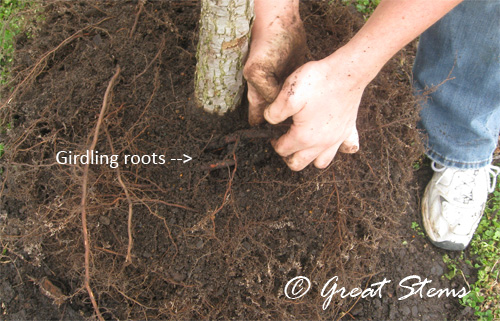
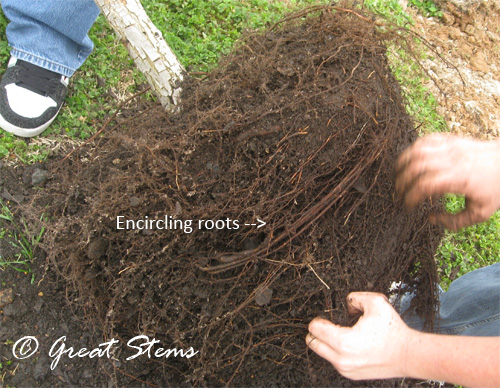 Don’t amend the soil. This goes against what many old-school methods teach, but when you amend the soil in the planting hole, you discourage roots from venturing into the existing soil, and your roots will start to girdle and strangle each other, trying to stay in the “better soil.”
Don’t amend the soil. This goes against what many old-school methods teach, but when you amend the soil in the planting hole, you discourage roots from venturing into the existing soil, and your roots will start to girdle and strangle each other, trying to stay in the “better soil.”
Dig a hole twice as wide and no deeper than the height of the root flare — it’s better to plant high than low — that root flare of the tree needs to stay visible. Sides of the bowl should be sloping and not smooth like ceramic (typically found when digging in clay soil).
Plant wisely — learn the height and requirements of a tree before you plant it. Planting large trees under electrical wires or trees in other poor locations only leads to heartache later, not to mention time and money wasted.
Pruning
Every cut is a wound. Only prune when absolutely necessary. Always cut outside the branch collar, not flush against the tree.
There are methods to helping a wound heal better — not necessarily “sealing” it — so research this before you harm your tree. One method includes cleaning up the jagged edges of a wound with a sharp knife.
Prune from the outside, NOT from the inside of the canopy — these inner branches are most critical to the tree’s health. In other words, raising the canopy of a tree might be nice for humans, but it is an ill-fated practice in regard to the tree itself. And don’t top the tree.
It’s best do any pruning and shaping in the first year, and then leave the tree alone as best you can. Prune off suckers and secondary leaders as appropriate for the long-term shape and stability of the tree.
Mulch should extend as wide as the branches of the tree extend — the root system often extends as far as twice as wide as the canopy of the tree, depending on the species.
Grass and trees don’t mix. One affects the health of the other. Grass affects whether the roots of the tree can obtain oxygen and water, and it’s the smaller roots farther away from the tree that do this work.
Oak Wilt
Oak wilt spreads via root systems in red oaks and live oaks, but it spreads by fungal spores as well for red oaks. This is why you find major live oak/oak wilt centers with infected trees surrounding them, but it’s the red oak that can create the situations to spread out and create new oak wilt centers.
Looking at Trees in the Urban Environment
As a result of this class, our eyes have been opened to the great harm an urban environment causes trees. The way developers place asphalt, sidewalks, curbs, and raised beds shockingly cuts off the root systems of many urban trees, leading to the premature demise of these trees. Damage from lawnmowers and construction vehicles also severely wound trees. And then there’s mulch. All around town right now, I’m seeing huge mounds of mulch at the base of trees, smothering the root flare and going several inches up the trunk, and this will lead to weakness and potential rotting of the tree base. Think about the costs involved in dealing with weakening trees, dying trees, and the replacement of once-old and massive trees. Urban development with thought and care might have let those beautiful trees remain healthy and standing for decades to hundreds of years to come.
Graduation and Leaf for a Leaf
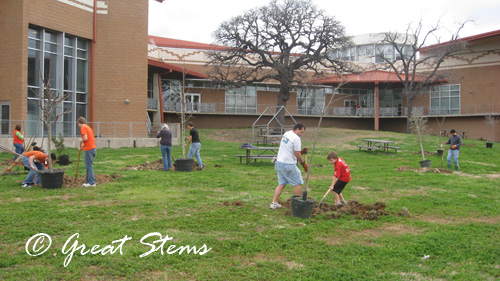 After the last class, in conjunction with the Leaf for a Leaf program at the city libraries, we helped plant trees at the Carver Library in Austin. With the planting of about 30 of a variety of trees, we helped turn what was once an open, high maintenance grass lawn into what will one day become a shade-offering “Growth Potential Grove,” as the program calls it. Our son got involved and helped.
After the last class, in conjunction with the Leaf for a Leaf program at the city libraries, we helped plant trees at the Carver Library in Austin. With the planting of about 30 of a variety of trees, we helped turn what was once an open, high maintenance grass lawn into what will one day become a shade-offering “Growth Potential Grove,” as the program calls it. Our son got involved and helped.
 We really are grateful for the knowledge we gained during this class, which was taught by several different foresters and arborists from Austin Parks and Rec, UT, Austin Urban forestry Board, Texas Forest Service, and other groups. It sure opened our eyes to look at trees in the city, forest, and home environments in a whole new way. And this weekend, we planted five more trees in our own yard. Mmmmm, oxygen.
We really are grateful for the knowledge we gained during this class, which was taught by several different foresters and arborists from Austin Parks and Rec, UT, Austin Urban forestry Board, Texas Forest Service, and other groups. It sure opened our eyes to look at trees in the city, forest, and home environments in a whole new way. And this weekend, we planted five more trees in our own yard. Mmmmm, oxygen.
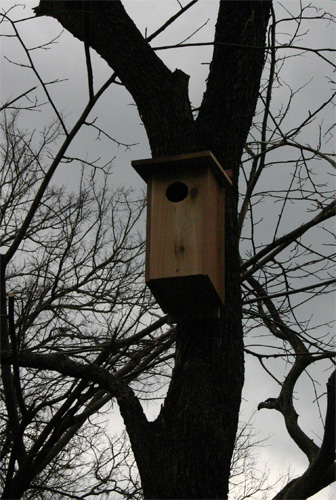
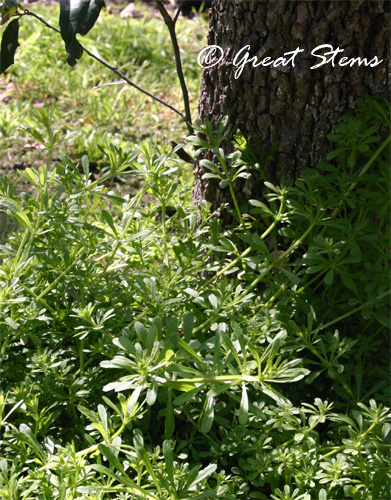
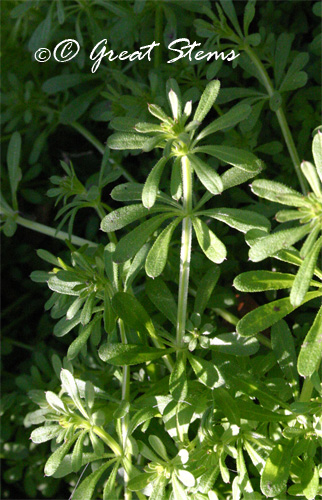
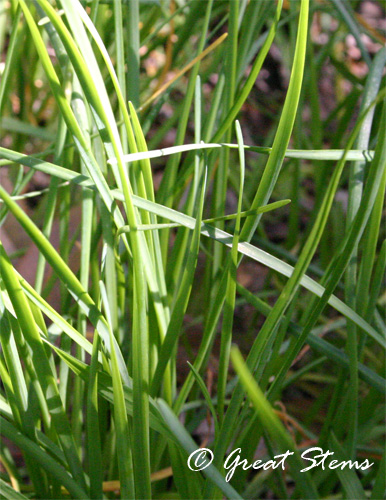
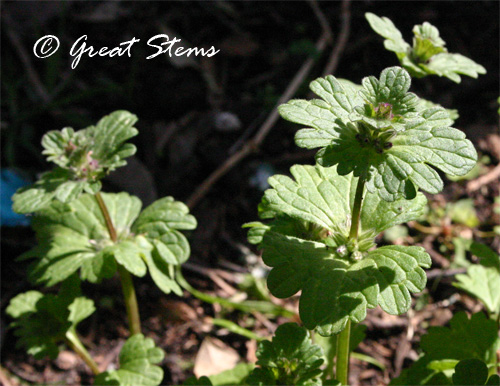
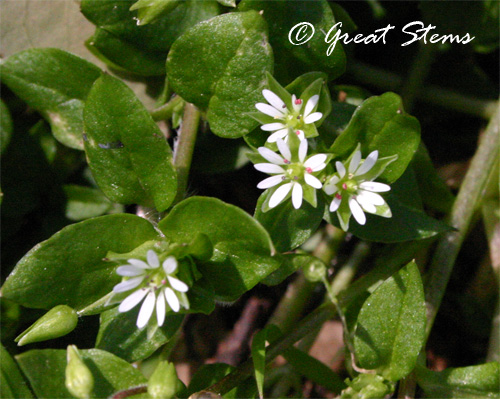
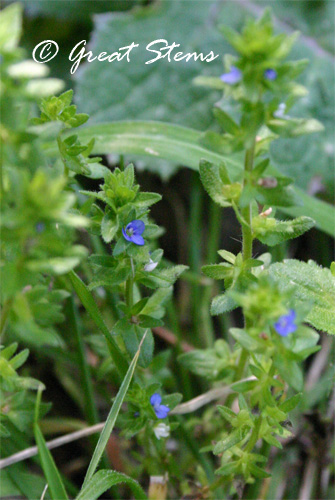
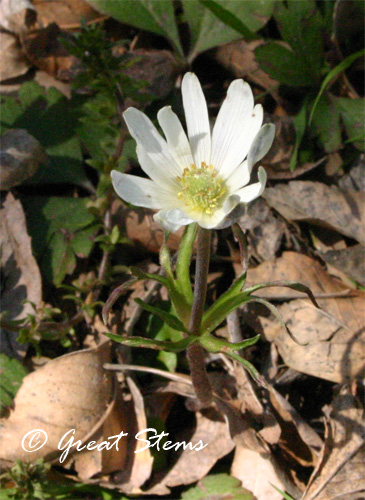
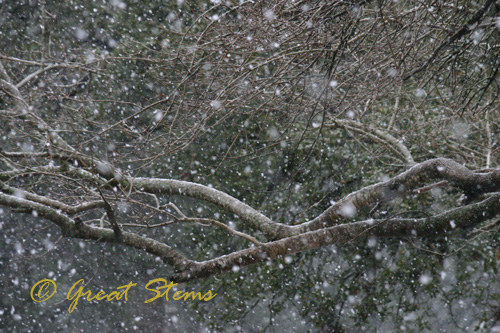
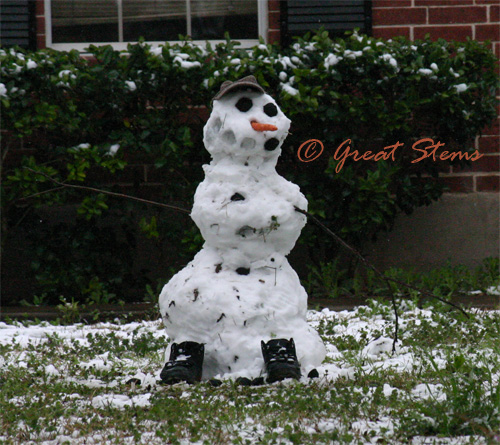
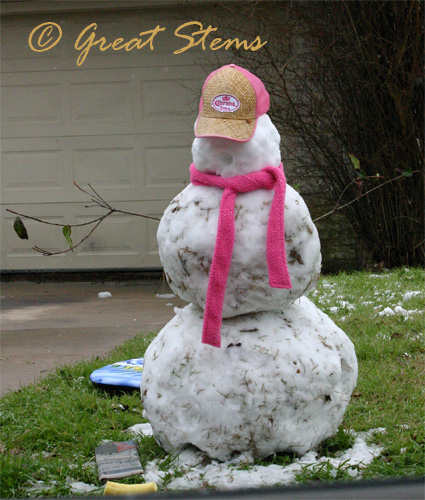
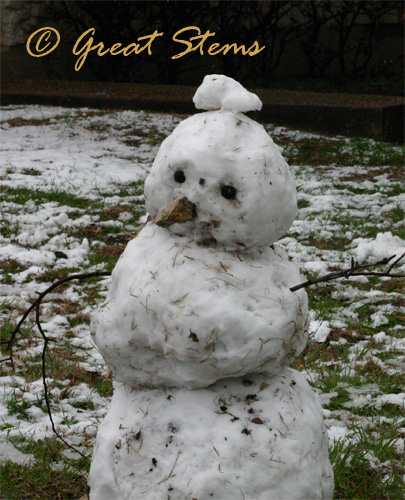
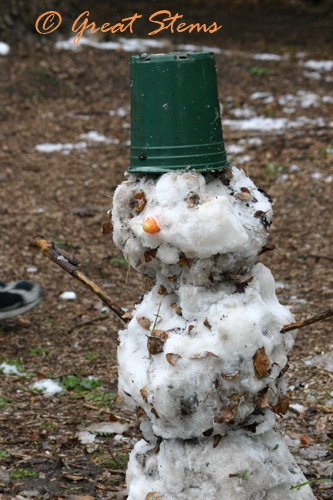 You can tell which ones got made earlier in the day, before the snow started melting.
You can tell which ones got made earlier in the day, before the snow started melting.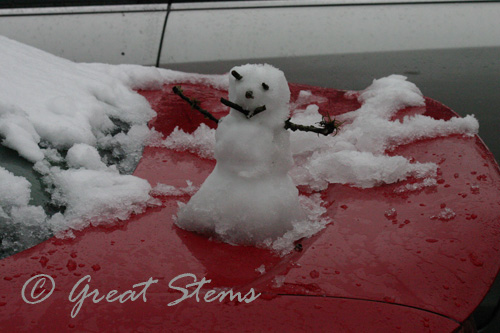
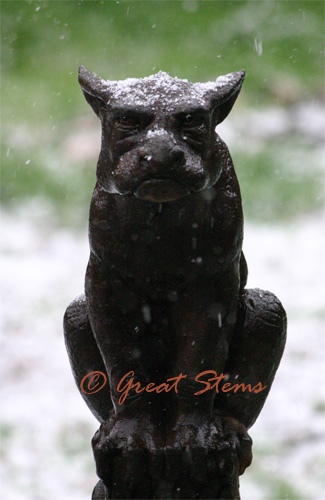
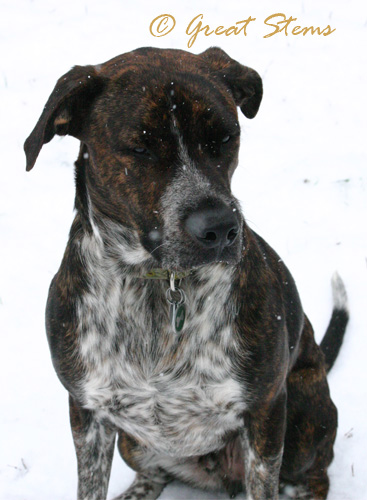
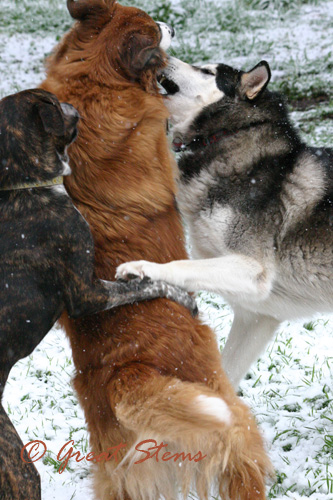
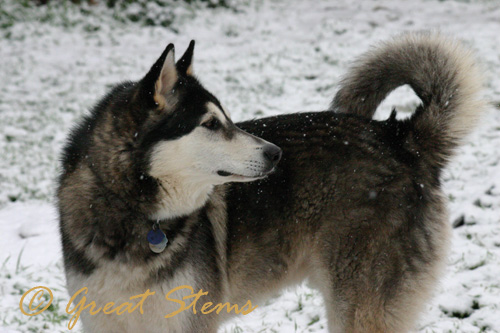
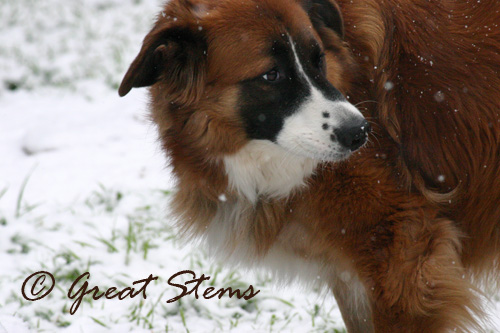
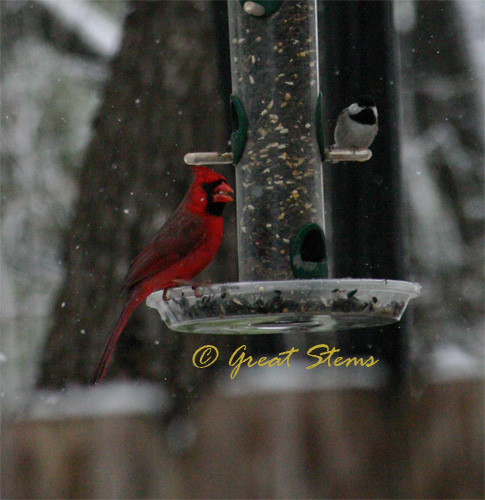
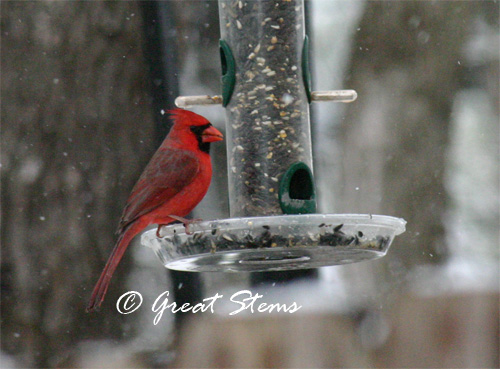
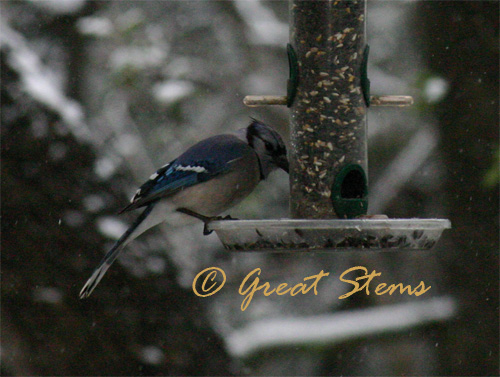
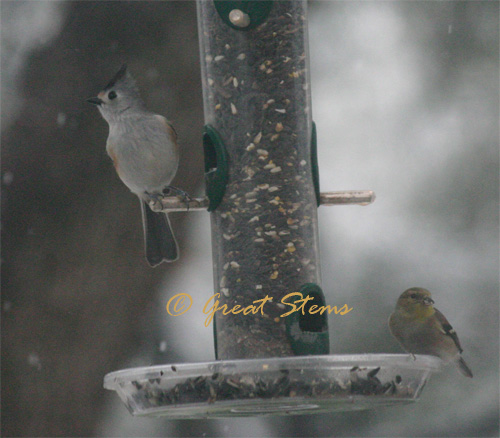
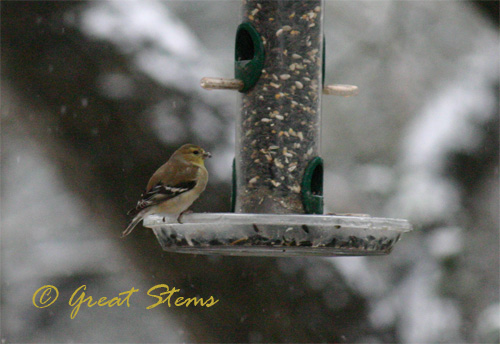
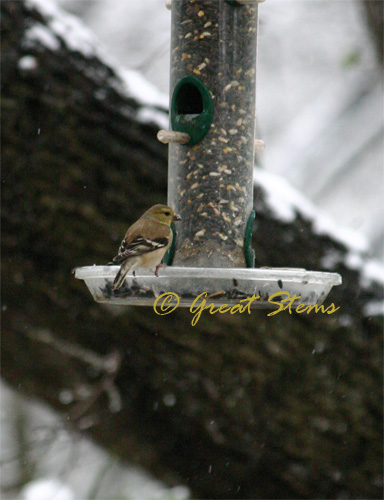
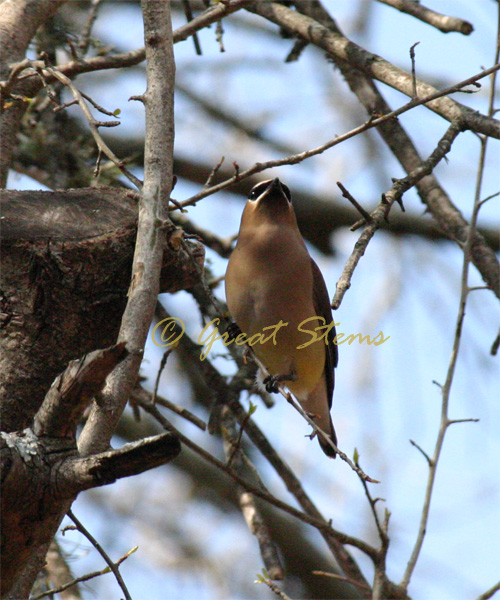 I’ve heard all about the wonderful Cedar Waxwings, but until today I hadn’t seen them in my own yard. We’ve had a giant Yaupon in front of our house since we moved here, so I figured this had more to do with me not being around when the birds were migrating, rather than their actual absence from our property each year.
I’ve heard all about the wonderful Cedar Waxwings, but until today I hadn’t seen them in my own yard. We’ve had a giant Yaupon in front of our house since we moved here, so I figured this had more to do with me not being around when the birds were migrating, rather than their actual absence from our property each year. 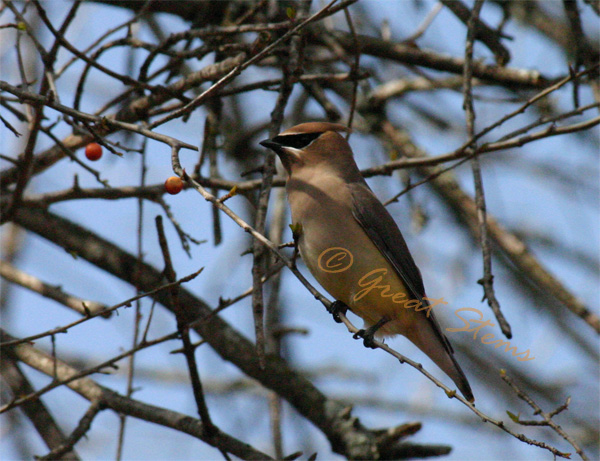
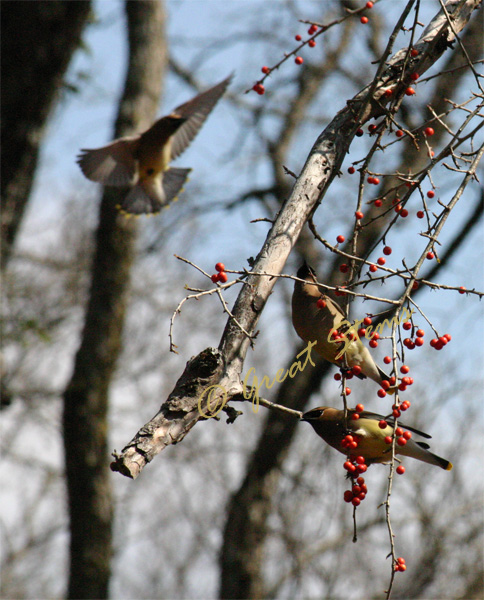 This afternoon, I was on my way out the door when I saw them. And I dropped everything and ran back into the house for the camera. For the next 20 minutes I delighted in capturing picture after picture of these gorgeous birds, and I enjoyed watching their antics.
This afternoon, I was on my way out the door when I saw them. And I dropped everything and ran back into the house for the camera. For the next 20 minutes I delighted in capturing picture after picture of these gorgeous birds, and I enjoyed watching their antics.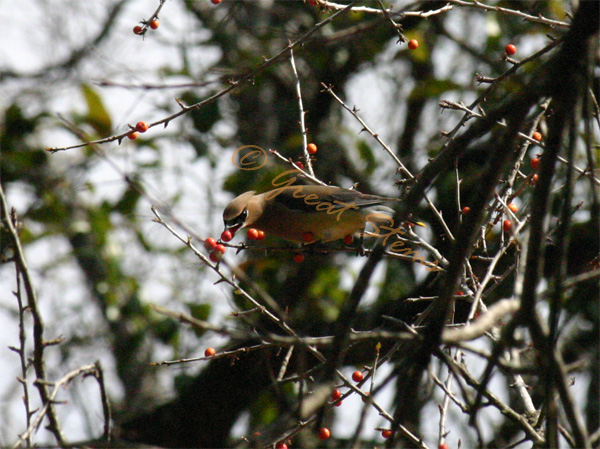 For one thing, they truly are birds of voracious appetites. When one talks about someone who eats like a bird, most likely they aren’t referring to these gluttons. They feasted on berry after berry as a group, flew off to a nearby oak to sing and digest a bit, and then flew right back to the yaupon for more fruity treats.
For one thing, they truly are birds of voracious appetites. When one talks about someone who eats like a bird, most likely they aren’t referring to these gluttons. They feasted on berry after berry as a group, flew off to a nearby oak to sing and digest a bit, and then flew right back to the yaupon for more fruity treats.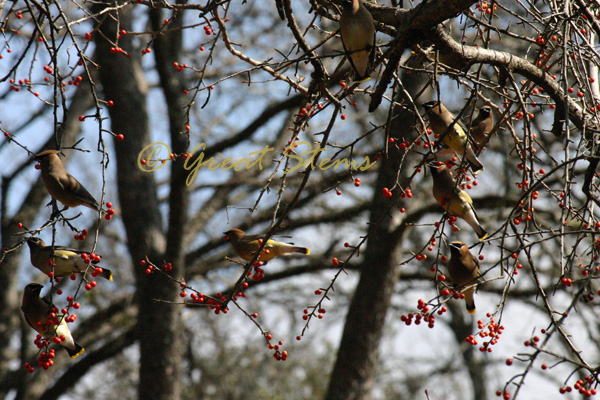 A few would gather on a berry-laden branch all together, hanging upside-down and enjoying the branch swing until it slowed enough that more berries could be wolfed down.
A few would gather on a berry-laden branch all together, hanging upside-down and enjoying the branch swing until it slowed enough that more berries could be wolfed down.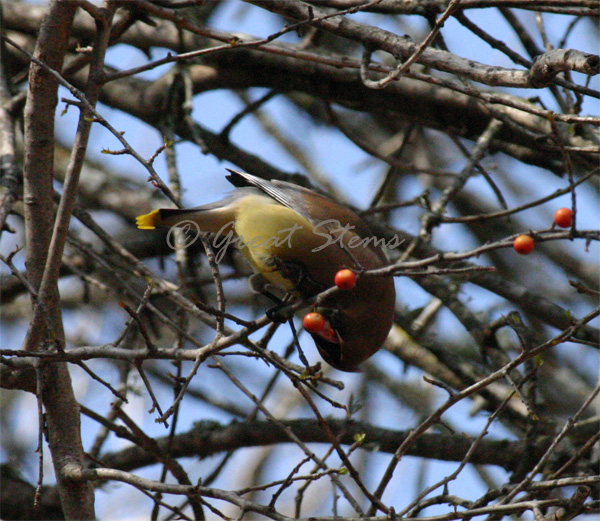
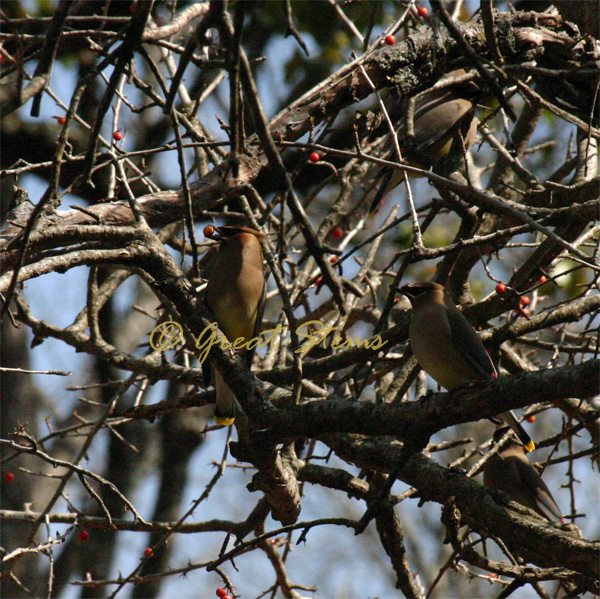
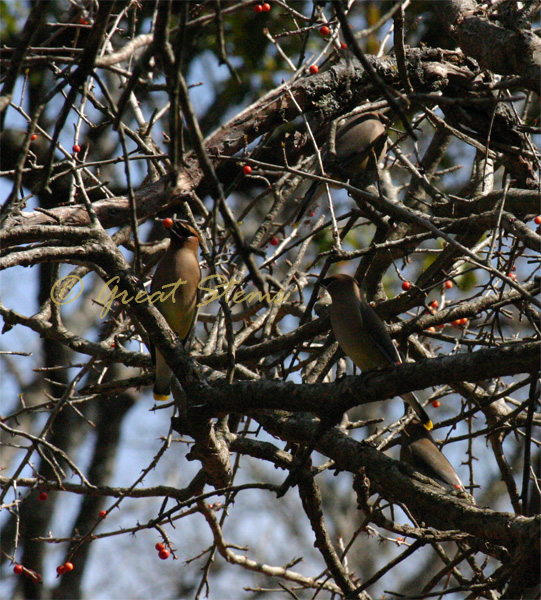 I’m truly amazed out how gorgeous these birds are. I had no idea. The yellow belly and yellow-tipped tail blend beautifully with their graceful tan, brown, and black feathers, and that mischievous black mask made us tease them about stealing our berries.
I’m truly amazed out how gorgeous these birds are. I had no idea. The yellow belly and yellow-tipped tail blend beautifully with their graceful tan, brown, and black feathers, and that mischievous black mask made us tease them about stealing our berries.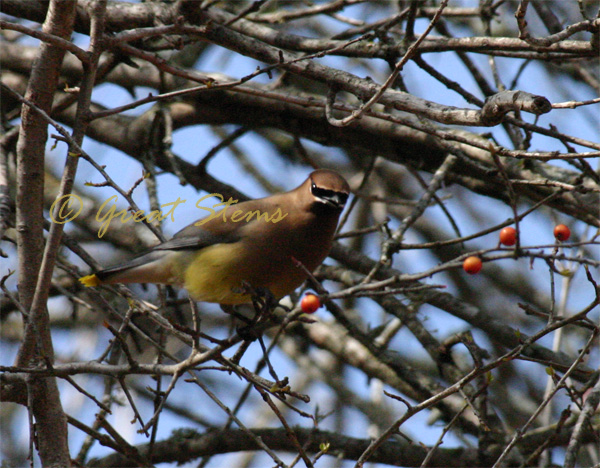
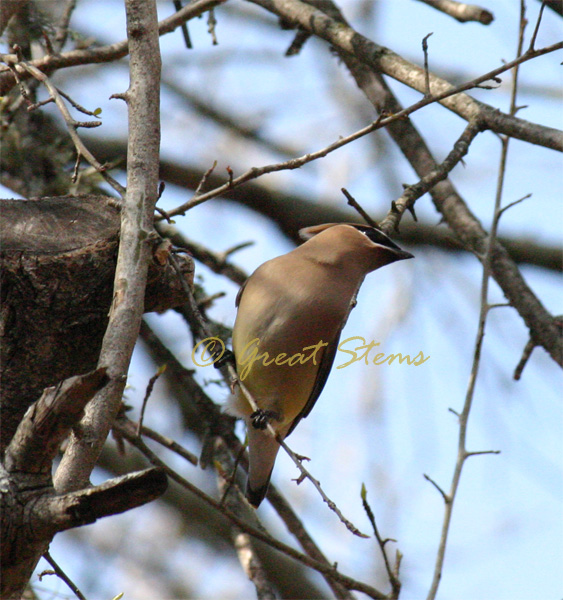
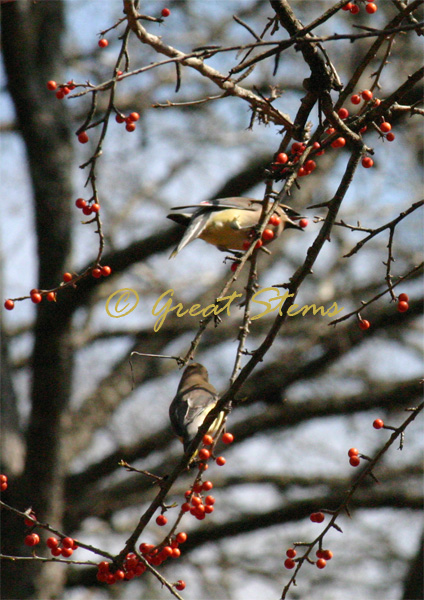 They didn’t mind us around at all, and they completely ignored the cat, who had slipped outside when I rushed in for the camera. In fact, they seemed a very curious, gregarious bunch. I read that these bold birds will even grab a bit of human hair while building nests in the north. Sometimes they get so intoxicated on the sugary berries that they’ll fly drunk and do a bit of a stagger walk — I was watching, but my birds apparently held their own quite well.
They didn’t mind us around at all, and they completely ignored the cat, who had slipped outside when I rushed in for the camera. In fact, they seemed a very curious, gregarious bunch. I read that these bold birds will even grab a bit of human hair while building nests in the north. Sometimes they get so intoxicated on the sugary berries that they’ll fly drunk and do a bit of a stagger walk — I was watching, but my birds apparently held their own quite well.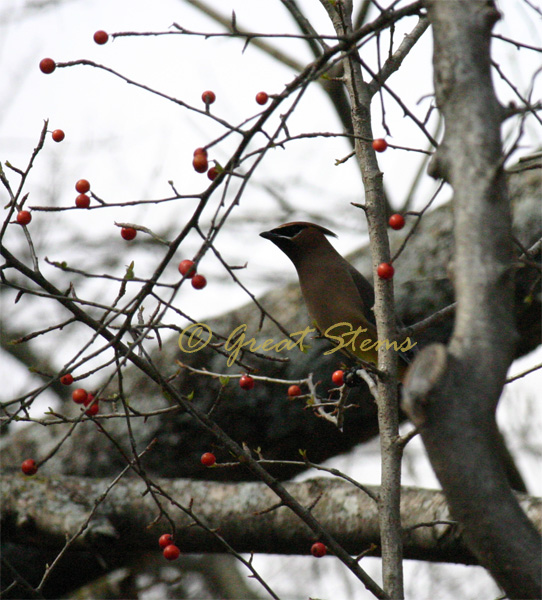
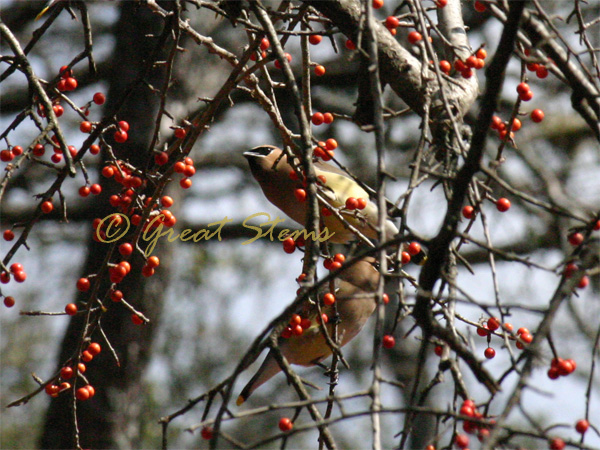
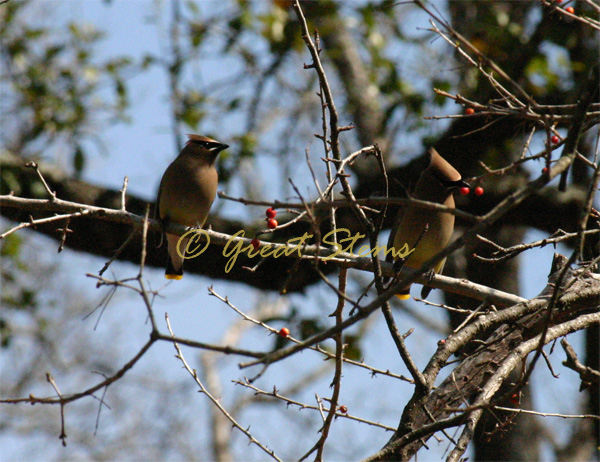 By the time I returned home today, the birds were gone. I hope another flock will pass through soon!
By the time I returned home today, the birds were gone. I hope another flock will pass through soon!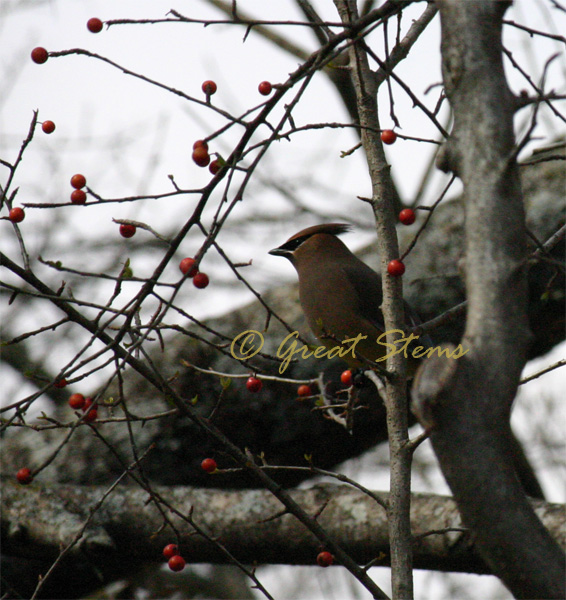
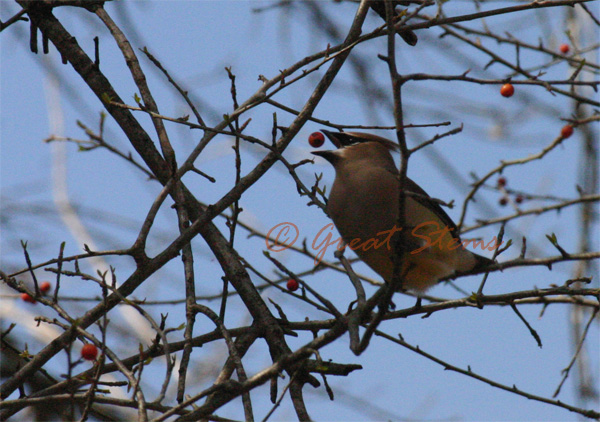





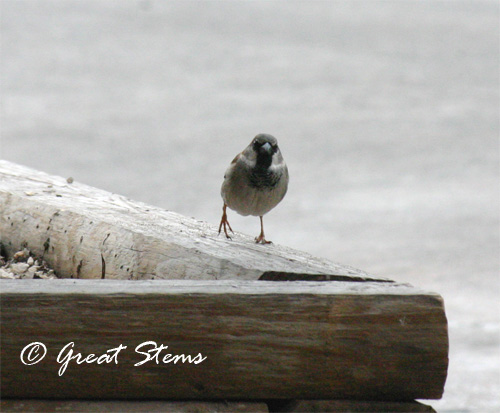
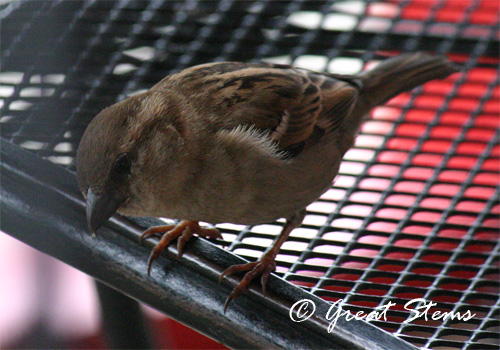
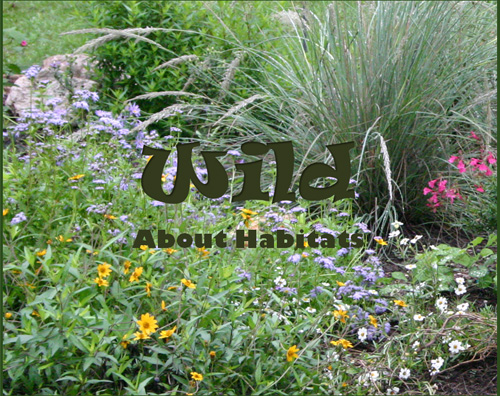 I want to thank all my fellow Austin Garden Bloggers who generously sent me photographs of wildlife in their garden so that I could put together a very unique and special presentation. As I go through the slide show each time, I know where each photograph came from, and I feel as though all these wonderful people are right there with me helping our students love and appreciate nature. Thank you, my friends!
I want to thank all my fellow Austin Garden Bloggers who generously sent me photographs of wildlife in their garden so that I could put together a very unique and special presentation. As I go through the slide show each time, I know where each photograph came from, and I feel as though all these wonderful people are right there with me helping our students love and appreciate nature. Thank you, my friends!